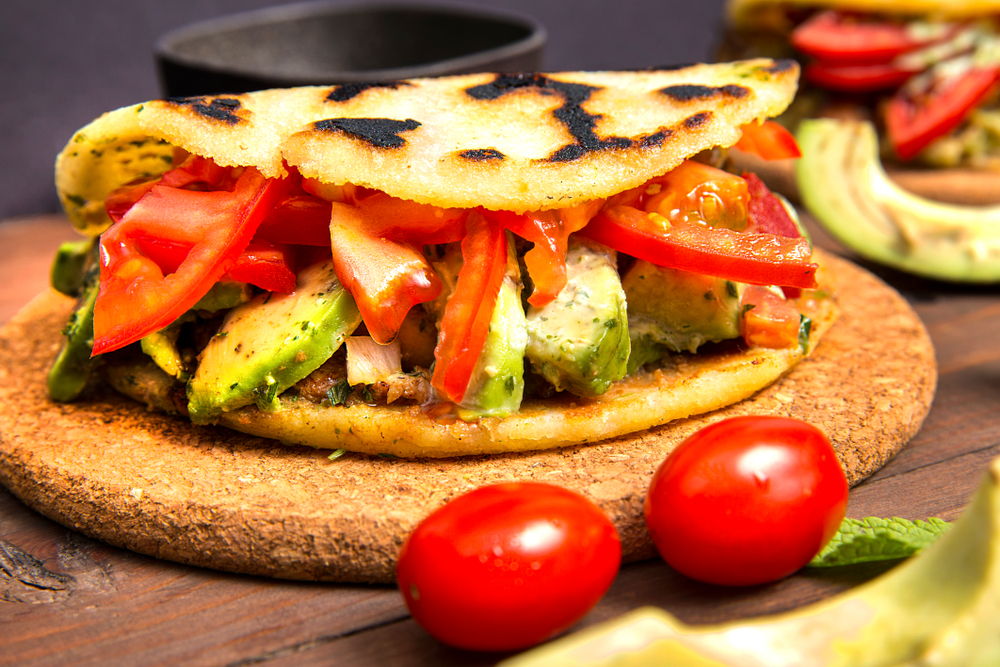- 2 cups of cornmeal that has already been cooked (also known as masarepa or harina de maz)
- 1 teaspoon salt
- 2.5 cups of hot water
- Optional: 1 tablespoon of butter or vegetable oil (for a deeper flavor)
- Combine salt and the precooked cornmeal in a large mixing basin. They should be fully combined.
- While continually stirring, slowly add the heated water to the cornmeal mixture. Mix everything together thoroughly and continue mixing until a dough forms.
- For the cornmeal to absorb the water and become easier to work with, let the dough rest for about five minutes.
- Examine the dough's consistency after it has rested. It should be soft and malleable but not too sticky. If the dough seems dry, add a tablespoon at a time of additional warm water until the correct consistency is achieved. A bit extra cornmeal can be added if it's too moist or sticky.
- Optional: At this point, you can stir in a tablespoon of melted butter or vegetable oil to give the dough a richer flavor. Until it's spread evenly, knead it into the dough.
- Shape the dough into balls after dividing it into equal parts of approximately 1/4 to 1/3 cup apiece.
- Each dough ball should be flattened into a disc or patty using the palm of your hand. Arepas should be between half an inch and seven inches thick. To stop the filling from spilling out, make sure the sides are smooth and well-sealed.
- Over medium heat, preheat a griddle, nonstick skillet, or frying pan. Although it's not usually necessary, you may gently lubricate it with olive oil or cooking spray to prevent sticking.
- Place the arepas gently on the heated pan, allowing some space between each one. They should be cooked for about 5-7 minutes on each side or until a golden crust forms. The cooking time may need to be adjusted based on the arepa's thickness.
- Transfer the arepas to a baking sheet and continue cooking them in the oven while both sides are well-browned. Bake the arepas for 10 to 15 minutes, or until they are cooked through and hollow when tapped, in a preheated oven set to 350°F (175°C).
- The arepas should be taken out of the oven and given some time to cool. Split them open horizontally with a sharp knife, making a pocket for the filling.
- You may stuff the arepas with anything you choose, including cheese, meats, beans, avocado, and other goodies.
Enjoy serving the arepas warm!
Note: Arepas may be made with a variety of toppings and fillings to suit your preferences. They can be offered as a starter, a snack, or even a breakfast alternative.
Different Types:
Certainly! Here are a few well-liked arepas, each with special qualities and fillings.
Reina Pepiada: One of Venezuela's most well-known and adored arepa varieties is the Reina Pepiada. Shredded chicken, avocado, mayonnaise, and occasionally cilantro and lime juice are used to flavor the filling.
Pabellón: A typical Venezuelan dish called pabellón is also used as an arepa filling. Shredded beef is prepared with spices, peppers, onions, and garlic. After that, the meat is mixed with black beans and topped with cheese and pieces of ripe plantains.
Dominó: Dominó arepas are called after the well-known game because they have a black-and-white color scheme similar to domino tiles. They have white cheese and black beans. The common seasonings for black beans are onions, garlic, and spices.
Jamón y Queso: This is a straightforward yet delectable arepa filling made of gammon and cheese. Sliced gammon and a variety of cheeses, such as mozzarella, cheddar, or queso de mano (a Venezuelan cheese), are frequently included.
Perico: Perico is the name of a typical scrambled egg dish from Venezuela. The Perico filling used in arepas is made of scrambled eggs that have been cooked with chopped tomatoes, onions, and occasionally bell peppers. It's a well-liked alternative for breakfast.
Carne Mechada: It is yet another traditional arepa filling from Venezuela. It entails beef that has been shred and slowly cooked, frequently with the addition of onions, peppers, tomatoes, garlic, and spices. The outcome is beef that is tasty, soft, and ideal for arepas.
Vegetarian/Vegan Fillings: Arepas can be made with vegetarian or vegan fillings to accommodate these diets. Grilled veggies, black beans, avocados, plantains, and different cheeses are examples of popular vegetarian fillings. Plant-based proteins like tempeh or tofu that have been spiced up together with veggies and vegan dairy substitutes are frequently seen in vegan selections.
These are only a few illustrations of the wide variety of arepa fillings that are offered. The options for fillings are essentially limitless, and you may get inventive by fusing various components to suit your palate. Arepas may be easily customized, allowing you to enjoy them with a wide variety of flavors and textures.










0 Comments
If you have any doubts related to food recipes, Please let me know